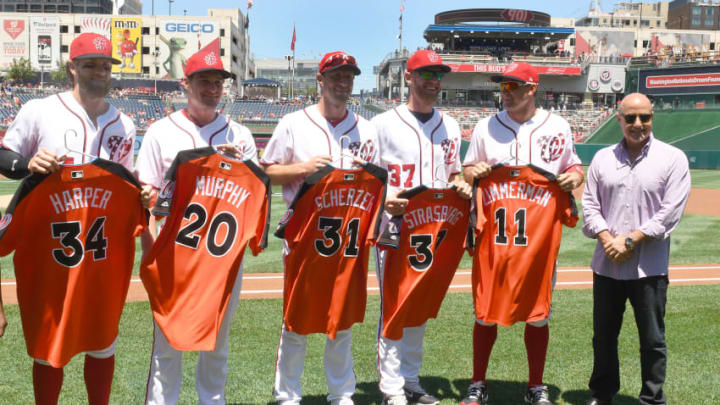
The Washington Nationals rotation had an impressive showing in 2017, but how does the rotation rank among all-time rotations?
When the Cy Young awards were announced, three of the top six vote-getters were Washington Nationals. In pursuing how unique that was, just how good the 2017 Nationals rotation truly comes into focus.
2017 Nationals numbers
The front three of the Nationals rotation was the highlight of the 2017 rotation, with ace Max Scherzer having very feasibly his best season, even though he only had 16 wins. Scherzer made 31 starts, throwing 200 2/3 innings, with a 2.51 ERA, 0.90 WHIP, and a 55/268 BB/K ratio. He had his best ERA+ and strikeout rate of his career.
Behind him in the rotation were Stephen Strasburg and Gio Gonzalez. Strasburg made 28 starts, throwing 175 1/3 innings, with a 2.52 ERA, 1.02 WHIP, and a 47/204 BB/K ratio. Gonzalez made 32 starts, leading the team with 201 innings, posting a 2.96 ERA, 1.18 WHIP, and a 79/188 BB/K ratio.
Tanner Roark led a bit of a rag-tag bunch that filled out the rest of the staff with very mixed results. Joe Ross, Edwin Jackson, A.J. Cole, Erick Fedde, Jacob Turner, Jeremy Guthrie, and Matt Grace each made starts on the season.
Overall, the Nationals starters threw 973 innings, allowing a 3.63 ERA, 1.20 WHIP, and posting a 333/1,012 BB/K ratio for a 9.4 K/9 and 3.07 K/BB.
The top 3 starters combined for 91 starts, 577 innings, 2.67 ERA, 1.03 WHIP, and a 181/660 BB/K ratio with Scherzer winning the Cy Young Award, while the trio combined for 300 points of voting. The top three also had 20.4 combined bWAR, finishing 2nd, 3rd, and 4th in bWAR among pitchers.
The question is just how good the Nationals starters were against historically good rotations. These were subjectively good rotations, and there are likely some other great rotations that are going to not be included, but specifically the focus was on rotations with high WAR totals and a strong 3-man top end of the staff like the Washington Nationals possessed.
Next: Recent Gold Standard
